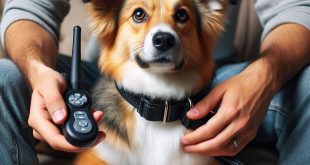How to Teach Your Dog to Roll Over – Training your dog is a rewarding experience that strengthens the bond between you and your furry companion. Teaching your dog tricks not only provides mental stimulation but also enhances your communication and understanding. One impressive trick that many dog owners aim to teach is the “roll over” command. In this article, we will guide you through five easy steps how to teach your dog to roll over, fostering an enjoyable training process for both you and your four-legged friend.
Table of Contents
Step 1: Establish Trust and Bond with Your Dog
Before delving into specific tricks, it is crucial to establish trust and a strong bond with your dog. Dogs are more likely to respond positively to training when they feel safe, loved, and connected to their owners. Create a nurturing environment by showering your dog with praise, affection, and playtime. Engage in activities that encourage trust-building, such as interactive play and regular exercise.
Additionally, positive reinforcement is key. Reward your dog’s good behavior with treats, verbal praise, and petting. This positive association will lay the foundation for successful training sessions and motivate your dog to learn new tricks.
Step 2: Teach Basic Commands
Before teaching the “roll over” trick, ensure that your dog understands basic obedience commands like “sit” and “stay.” These commands serve as building blocks for more complex tricks. Use positive reinforcement techniques to encourage your dog to respond to these commands consistently.
When your dog demonstrates mastery of basic commands, you can move on to more advanced tricks like rolling over. Establishing a solid obedience foundation will make the training process smoother and more effective.
Step 3: Break Down the Rolling Motion
To teach your dog to roll over, you need to break down the rolling motion into smaller, manageable steps. Begin by giving the “down” command, prompting your dog to lie down on their side. This position will serve as the starting point for the rolling motion.
Next, guide your dog gently by using treats. Hold a treat near their nose and slowly move it in a circular motion towards their shoulder. The aim is to encourage your dog to shift their weight and initiate the rolling movement. As they follow the treat, their body will naturally start to roll over.
Throughout this process, use verbal cues such as “good boy” or “good girl” to reinforce their behavior. Remember to reward them with treats and praise when they make progress or successfully roll onto their back.
Step 4: Add a Verbal Cue
Once your dog begins to understand the rolling motion, it’s time to introduce a verbal cue that they can associate with the trick. Choose a simple and distinct phrase like “roll over” and say it clearly and consistently each time you guide your dog through the rolling motion.
As you combine the verbal cue with the physical action, your dog will start to associate the words with the behavior. Repetition is crucial during this stage, so practice the trick regularly. Be patient and provide positive reinforcement with treats and praise when your dog responds correctly to the cue.
Step 5: Practice and Refine the Trick
Now that your dog has grasped the basics, it’s time to practice the trick in different environments and situations. Dogs thrive on consistency, so maintain a regular training schedule. Gradually reduce the reliance on treats, but continue to offer praise and rewards when they perform the trick successfully.
During the practice sessions, introduce distractions to help your dog focus on following your commands. This will ensure that they can perform the trick in various real-life situations. Remember, training takes time and patience, so be persistent and celebrate every small achievement.
Troubleshooting Common Challenges
While teaching your dog to roll over, you may encounter some challenges along the way. Here are a few tips to overcome common obstacles:
- Resistance or Reluctance: If your dog seems hesitant or resistant to rolling over, go back to the previous steps and reinforce the basics. Ensure that they are comfortable with the “down” command and the rolling motion before moving forward.
- Lack of Motivation: If your dog is not motivated by treats, find alternative rewards that excite them, such as their favorite toy or a belly rub. Experiment with different incentives until you find what works best for your furry friend.
- Older Dogs: Age should not be a barrier to learning new tricks. While older dogs may take longer to grasp the concept, they can still learn to roll over with patience and consistency. Modify the training sessions to accommodate their energy levels and physical abilities.
- Seeking Professional Help: If you encounter significant challenges or feel overwhelmed, consider seeking guidance from a professional dog trainer. They can provide personalized advice and support tailored to your dog’s specific needs.
Conclusion of How to Teach Your Dog to Roll Over
Teaching your dog to roll over can be an enjoyable and rewarding experience for both you and your furry companion. By establishing trust, building a foundation of basic commands, and breaking down the trick into manageable steps, you can successfully teach your dog this impressive trick. Remember to use positive reinforcement, be patient, and practice regularly. Enjoy the training process and celebrate your dog’s progress as they learn to roll over on command.
 Treat For Dog – Brain Training for Dogs, Dog Training & Obedience Discover Treat For Dog and get your pup on the path to smarter, happier, and healthier living with brain training for dogs.
Treat For Dog – Brain Training for Dogs, Dog Training & Obedience Discover Treat For Dog and get your pup on the path to smarter, happier, and healthier living with brain training for dogs.




